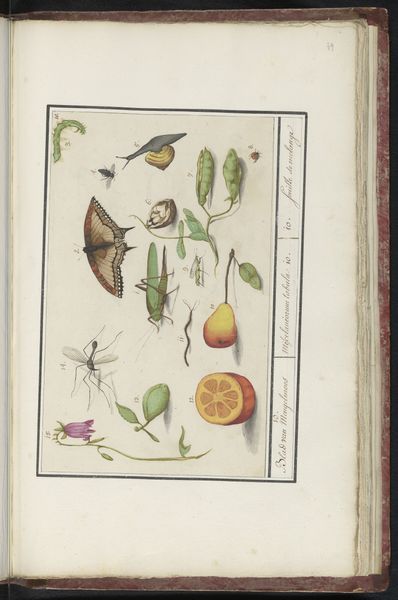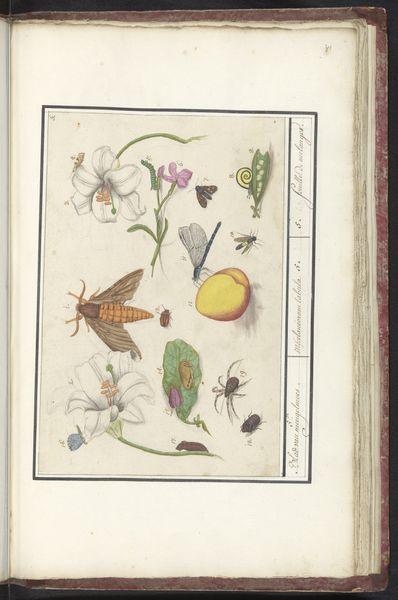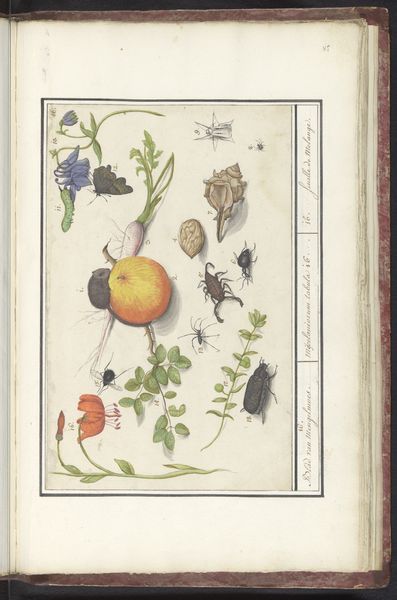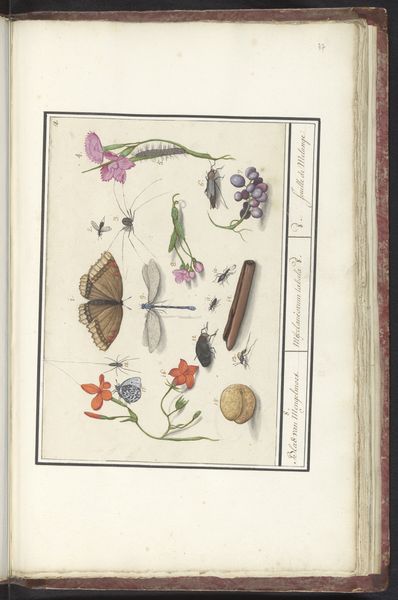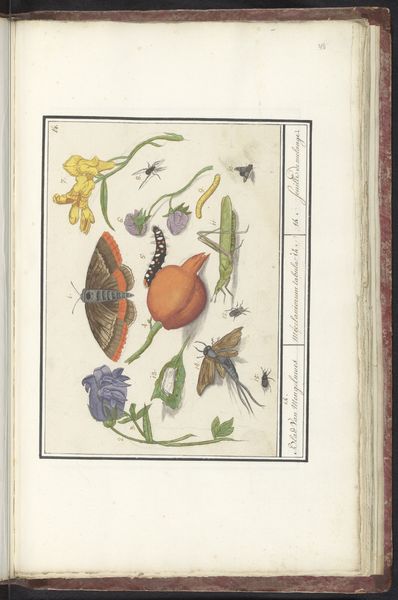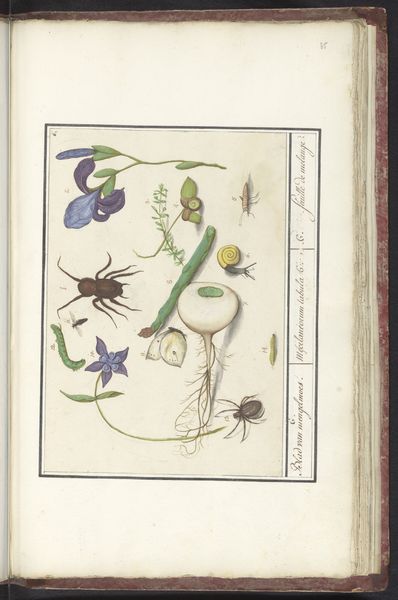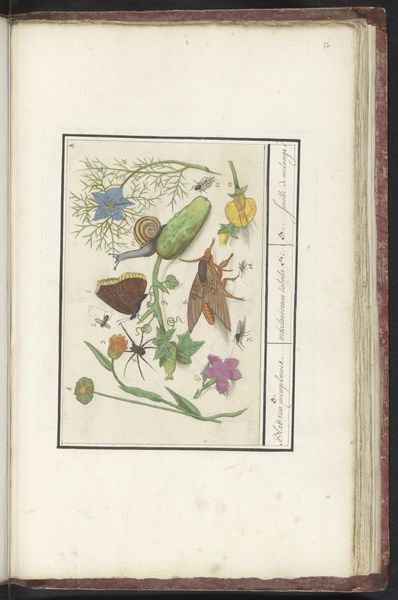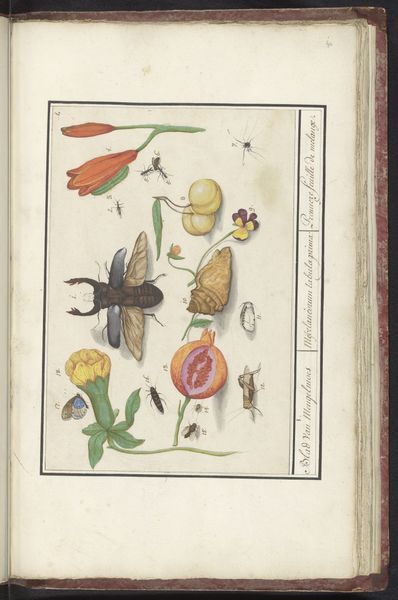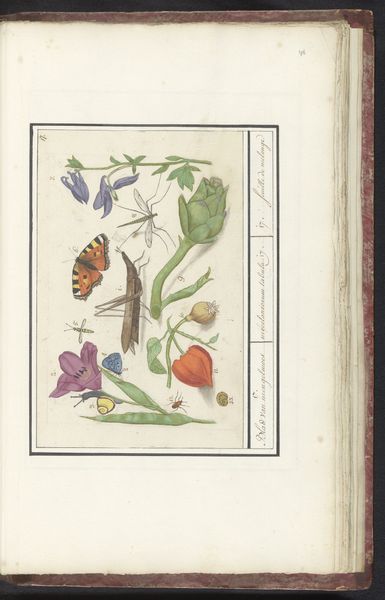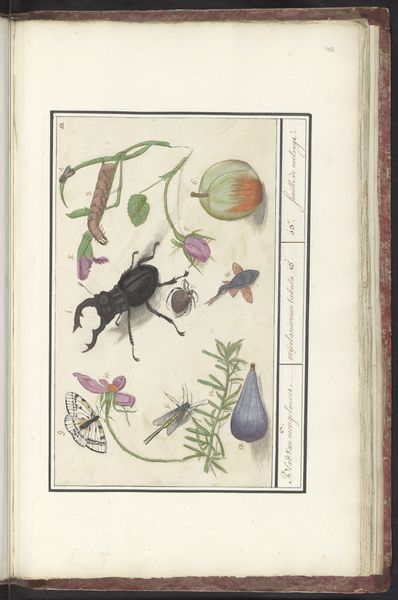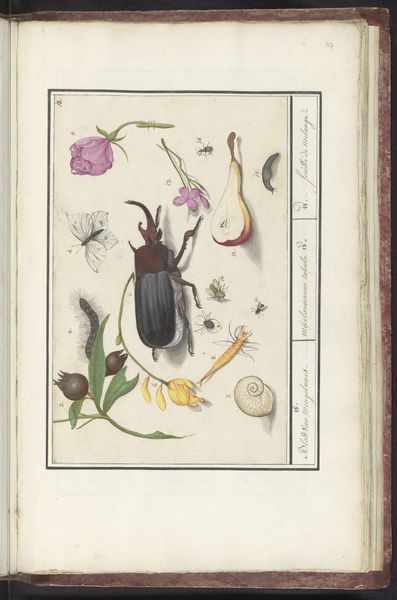
drawing, painting, paper, watercolor
#
drawing
#
painting
#
paper
#
11_renaissance
#
watercolor
#
coloured pencil
#
watercolour illustration
#
naturalism
Dimensions: height 160 mm, width 248 mm
Copyright: Rijks Museum: Open Domain
Curator: What a meticulously rendered collection! "Natuurhistorische ensemble (nr. 7)" by Elias Verhulst, likely created between 1596 and 1610, showcases a naturalist's curiosity through the artistic mediums of watercolor and drawing on paper. The vibrant colors and attention to detail speak volumes. Editor: My initial impression is one of delightful chaos. It’s not a formal botanical illustration but rather a playful, almost exuberant jumble of flora and fauna. The dragonfly practically leaps off the page, and I love the contrast between its muted tones and the bright oranges. Curator: Exactly! And that's partly because these "cabinets of curiosities" or "Wunderkammern," where items like this were stored, blurred the lines between scientific documentation, artistic expression, and sheer entertainment. The social context of these private collections and the public museums that grew from them cannot be understated, serving to document and claim ownership of a newly expanded world. Editor: It's fascinating to consider the power dynamics inherent in this collection of “nature.” Who gets to define what’s worth studying and preserving? The Latin labels alongside, clearly marking a specific classification system. This ordering and attempt at ownership highlights for me the power dynamics at play in the late Renaissance's view of the natural world, echoing ongoing issues today. Curator: Indeed. The act of drawing, painting, and categorizing was itself a form of appropriation. Moreover, how did the production and ownership of imagery play into these socio-political projects? For whom was this image intended, and what effect would it have on them? Was this knowledge seen as valuable, and how did the work justify itself to the owner? Editor: And there's a powerful subtext here about how we perceive and interact with our ecosystem. Verhulst's close observation celebrates the beauty of biodiversity while unintentionally, it seems, underscoring the human drive to catalogue and therefore, control, our surroundings. It's not an inherent flaw, simply a consequence of perspective. Curator: Precisely. What initially presents as objective documentation becomes a complex window into the social, cultural, and intellectual landscape of its time, revealing anxieties and ambitions embedded within seemingly straightforward imagery. Editor: The charm of "Natuurhistorische ensemble (nr. 7)" rests not only on its beauty but also on its uncanny ability to spark reflection, making us think critically about the legacies of scientific inquiry and representation. Curator: A true testament to how images and art can inform dialogues across centuries of history, as well as prompt self-reflection.
Comments
No comments
Be the first to comment and join the conversation on the ultimate creative platform.
